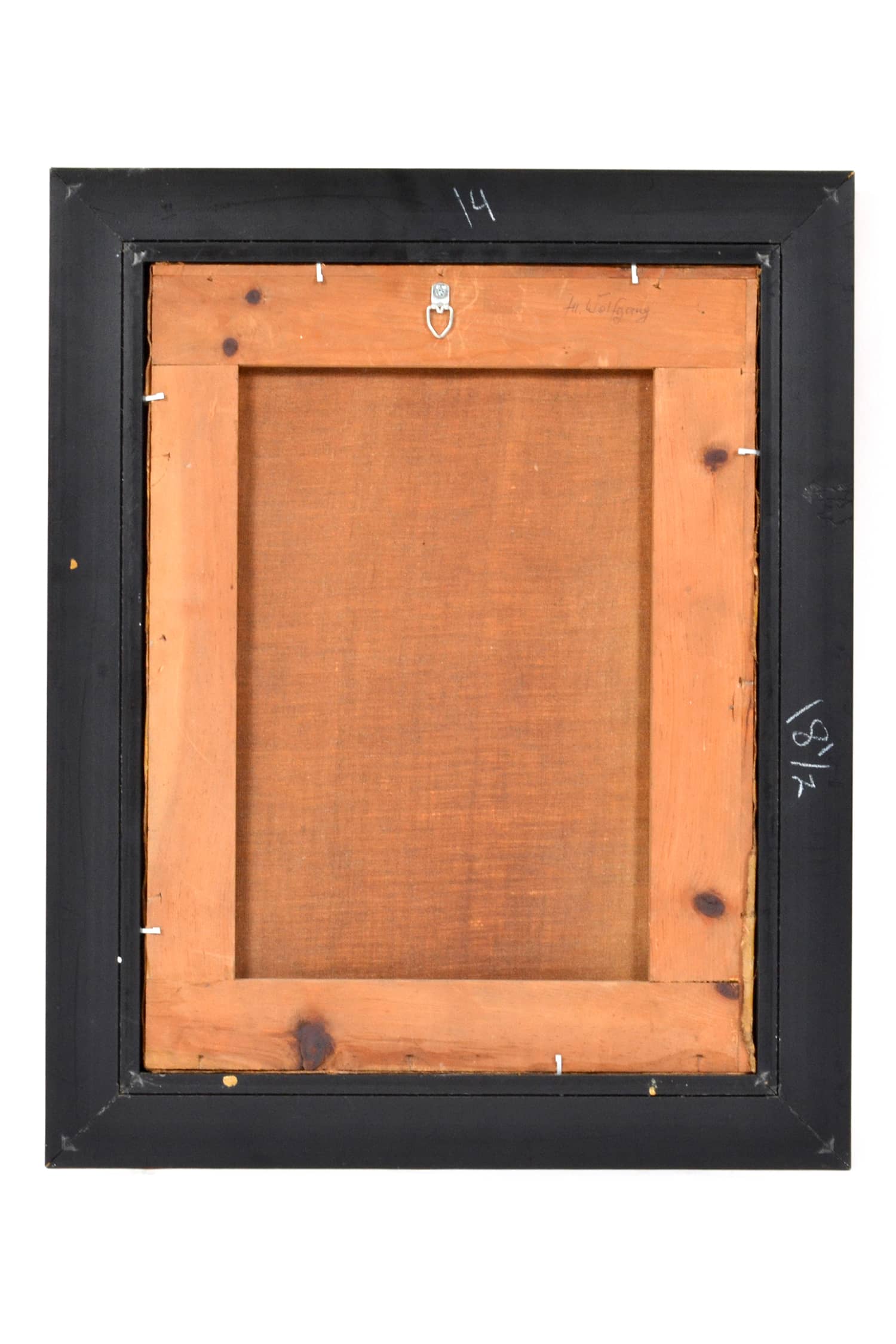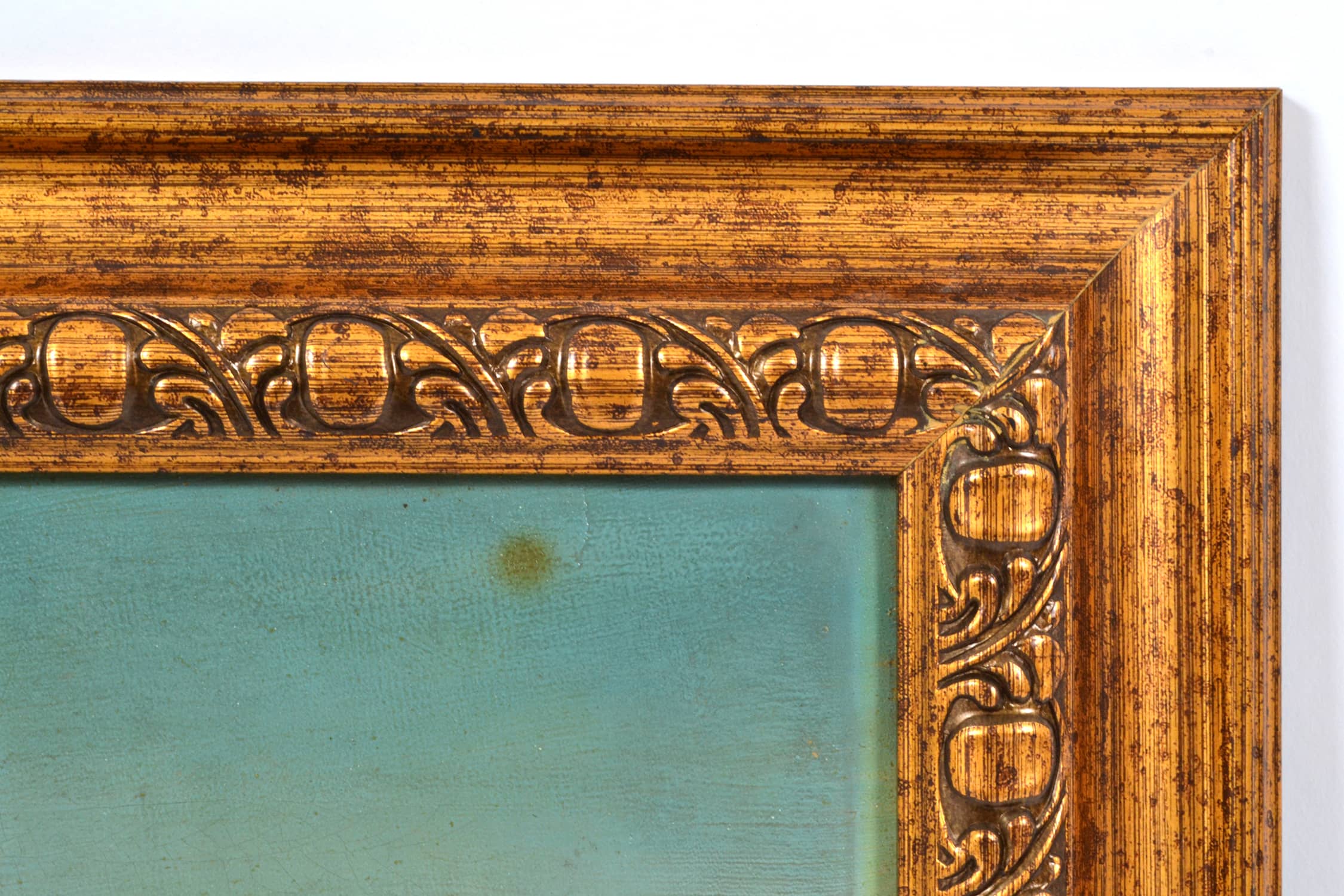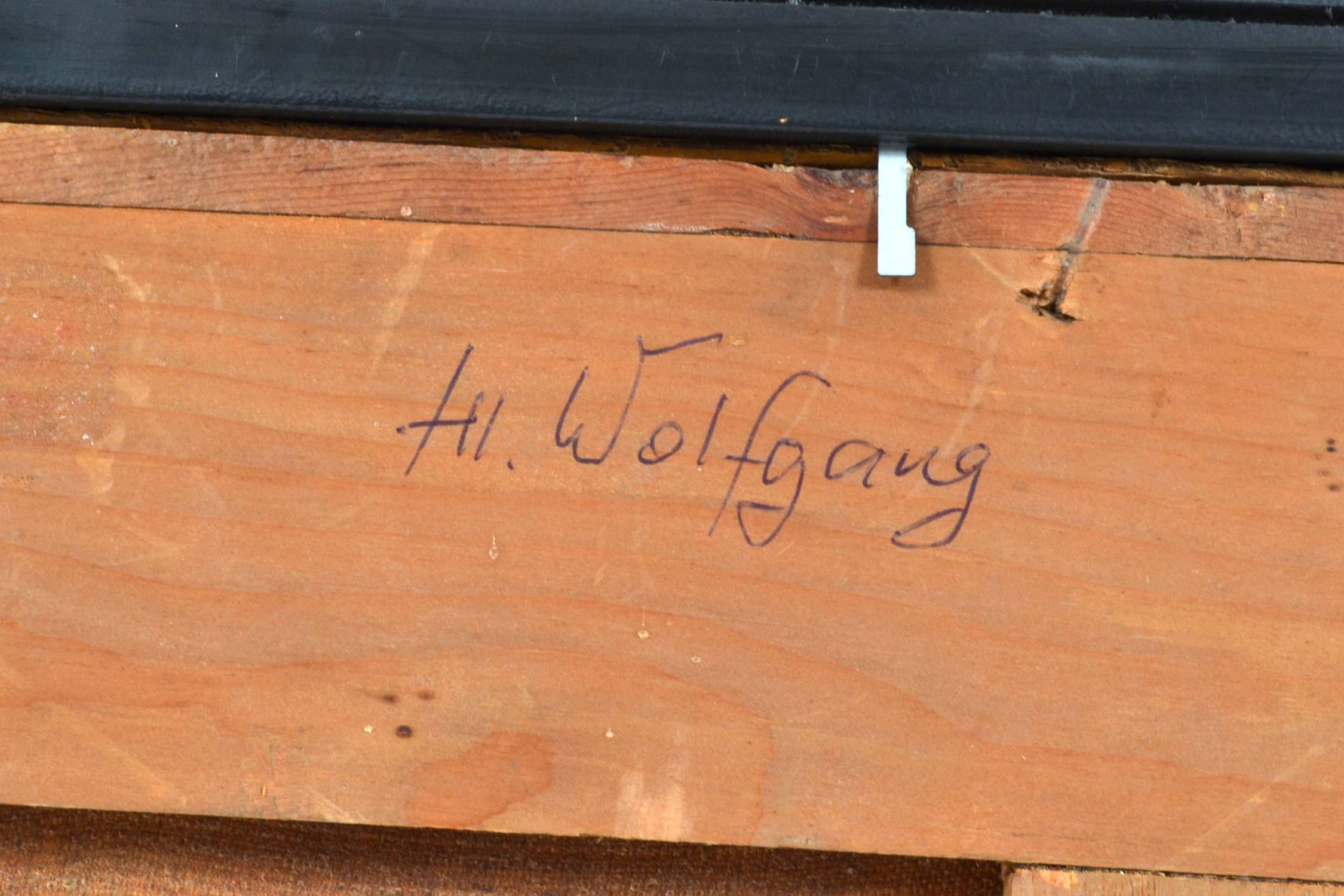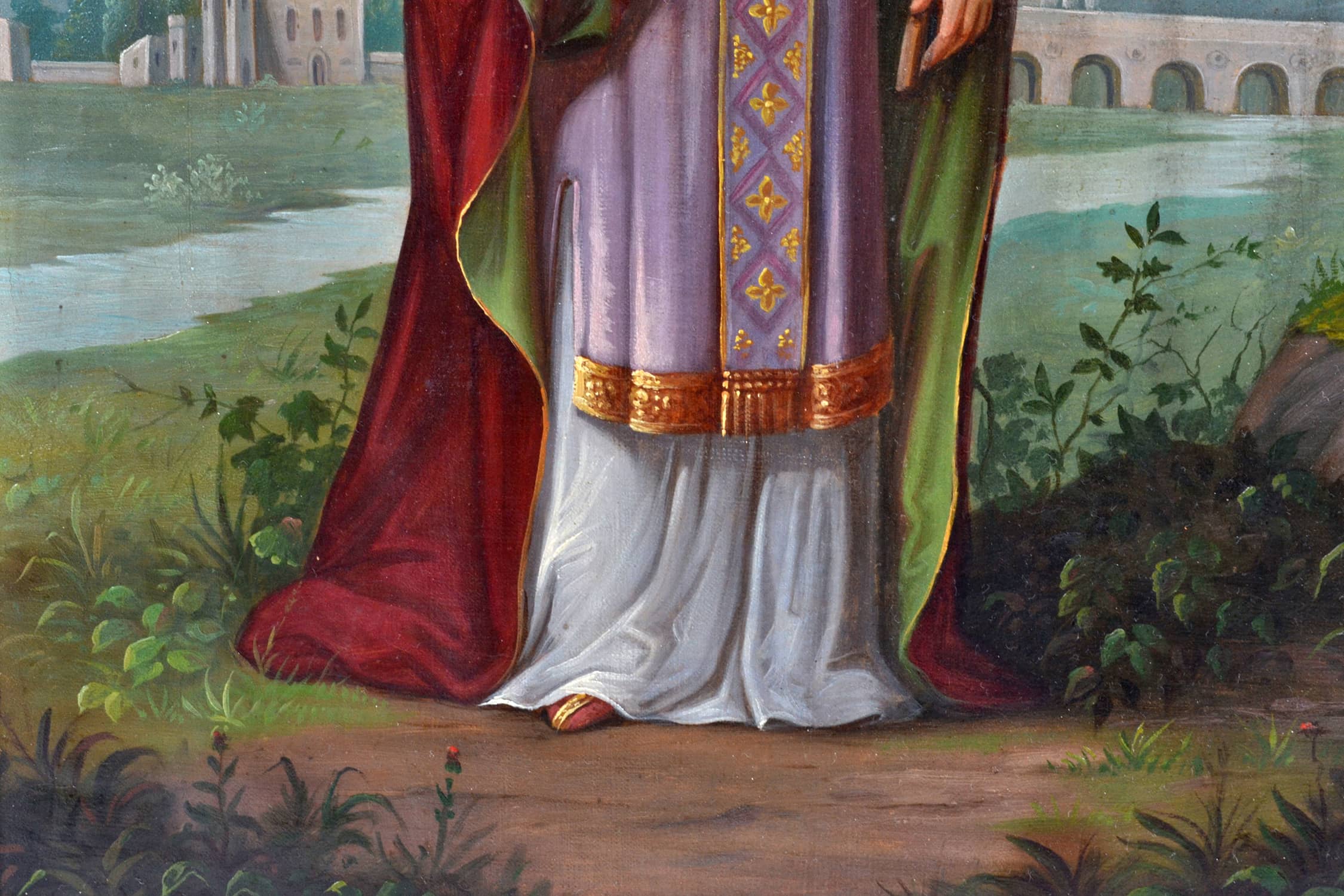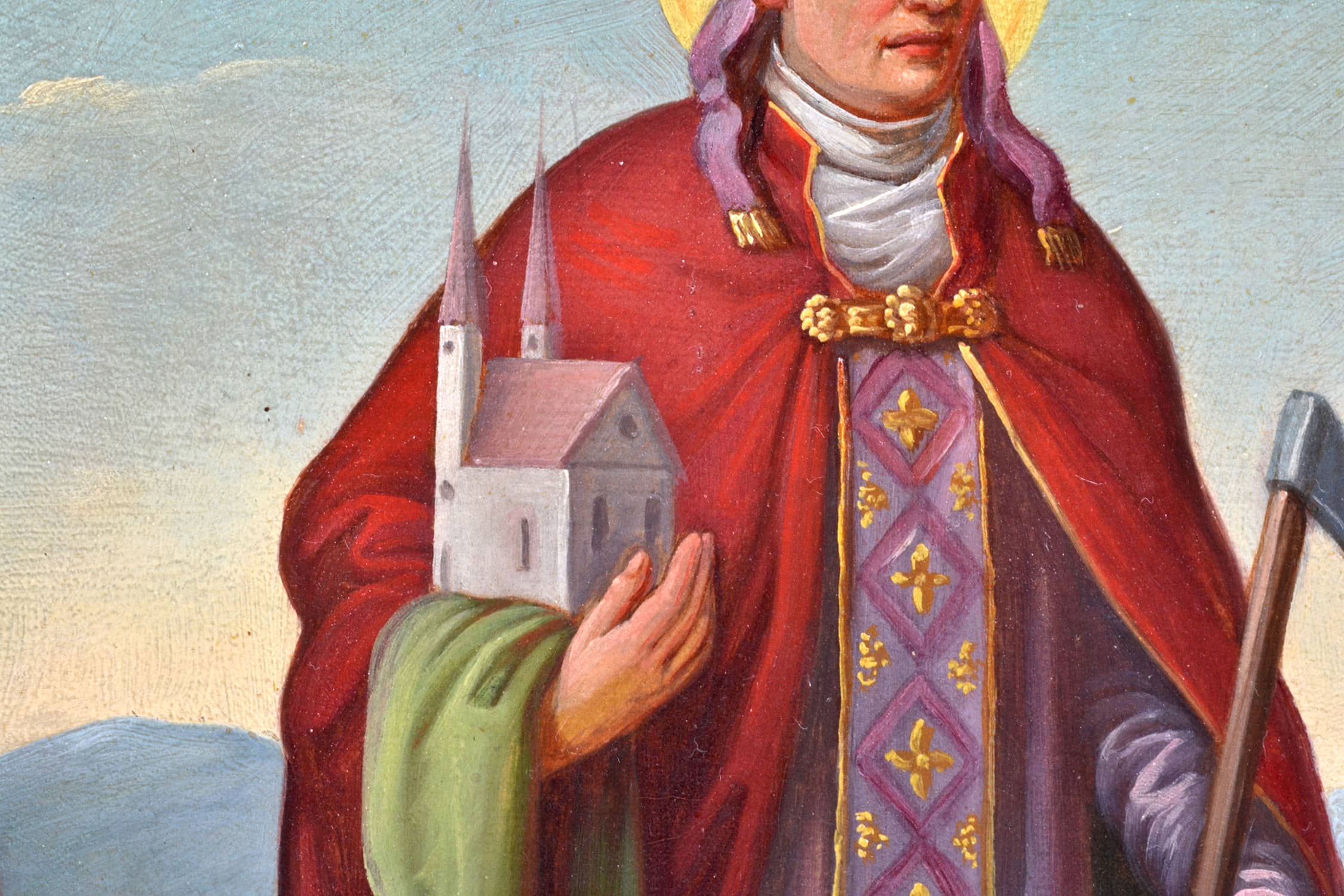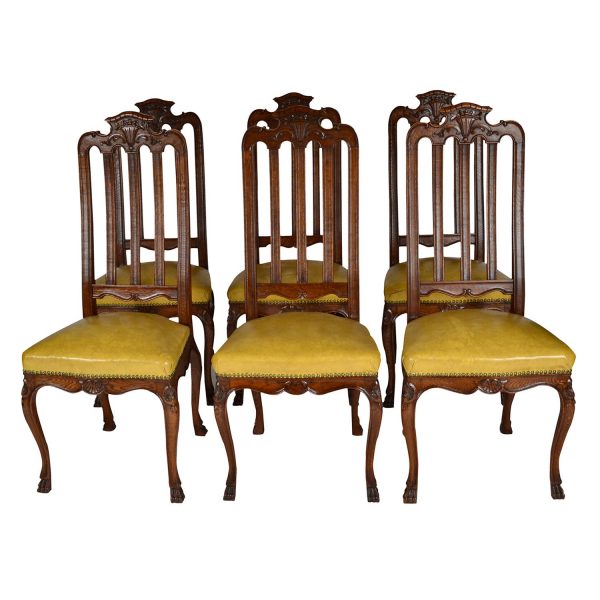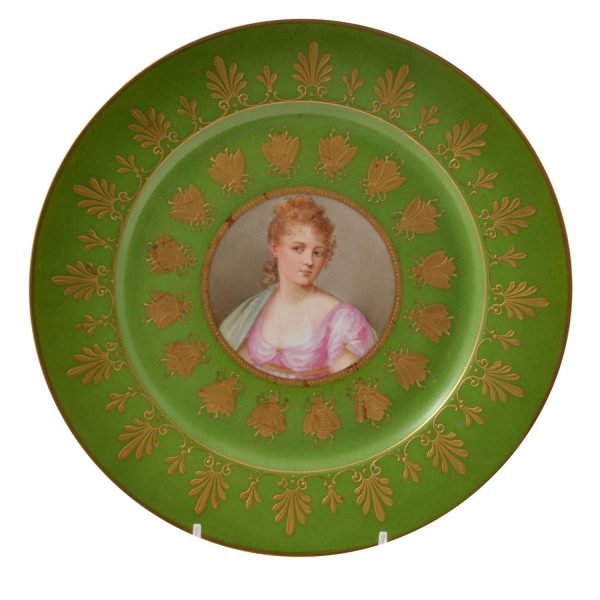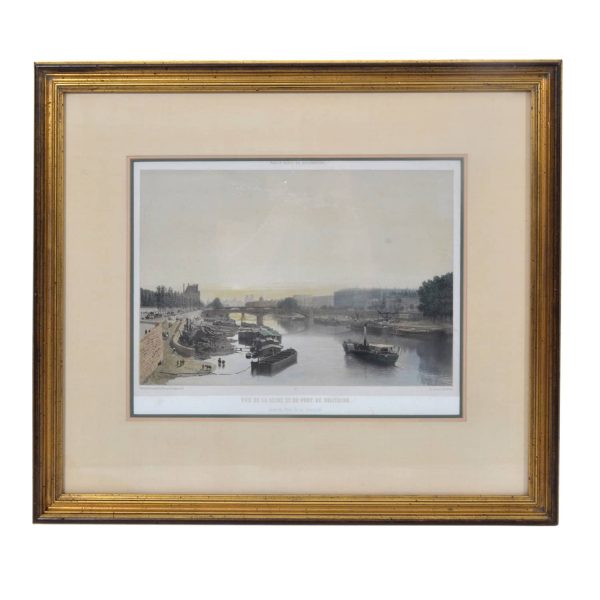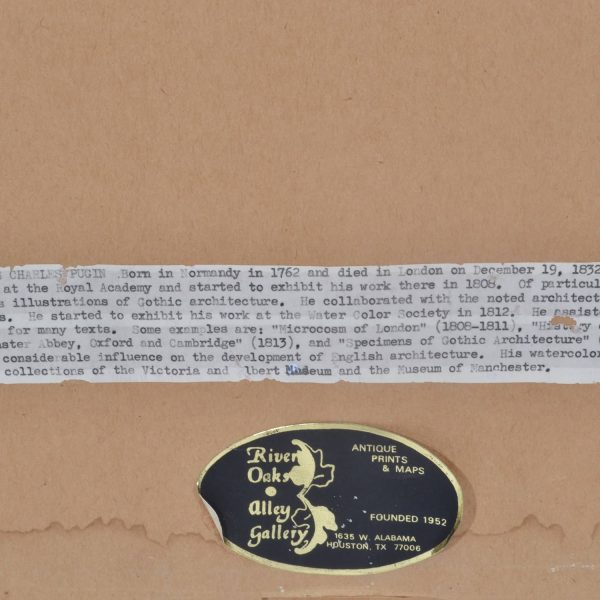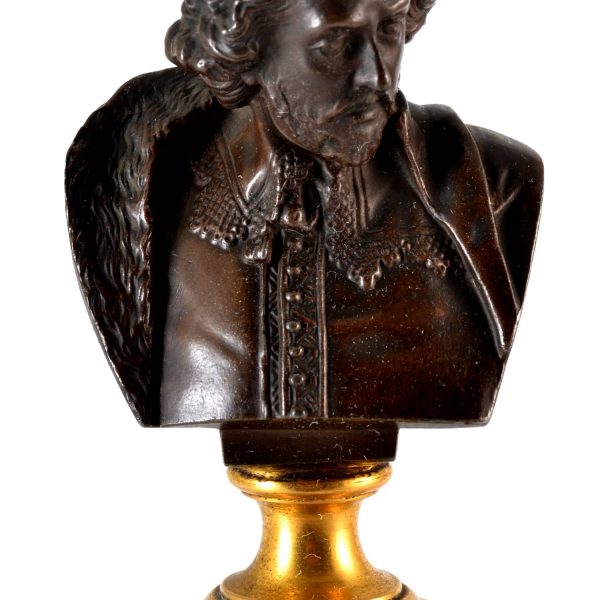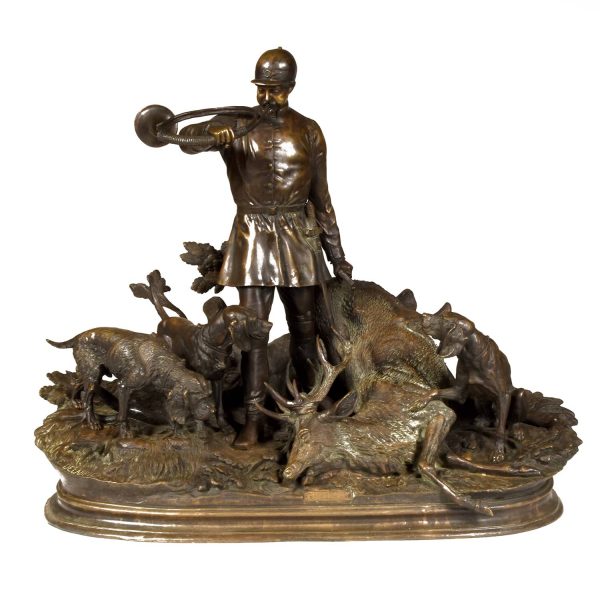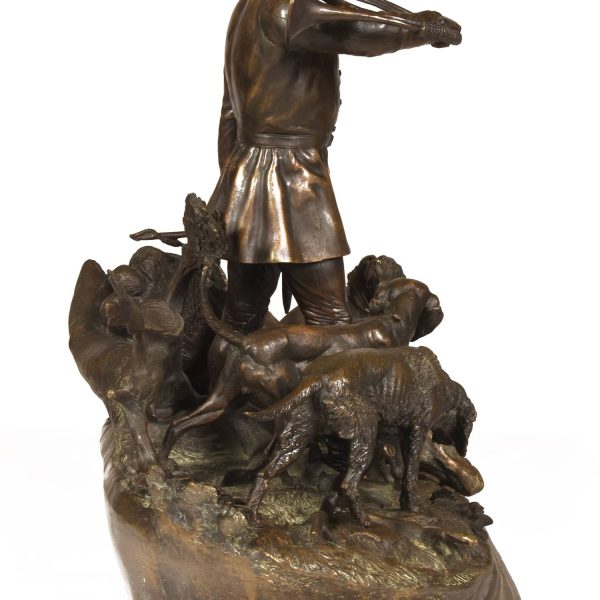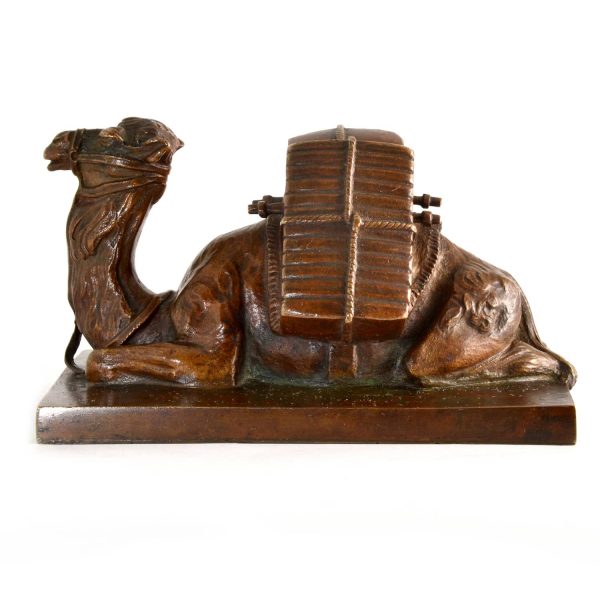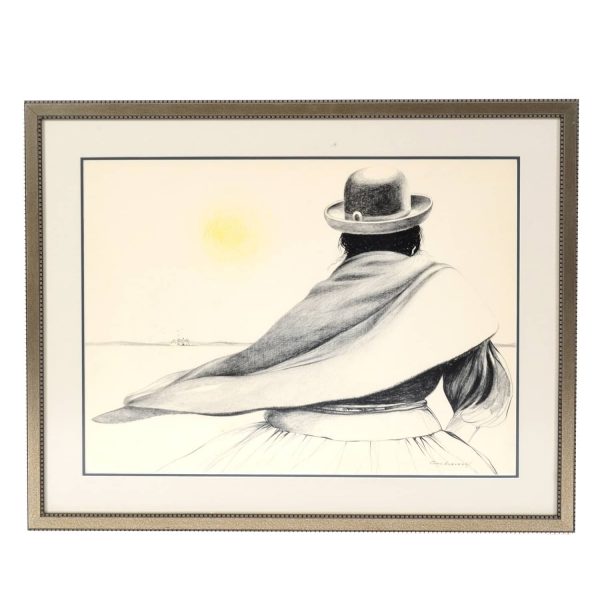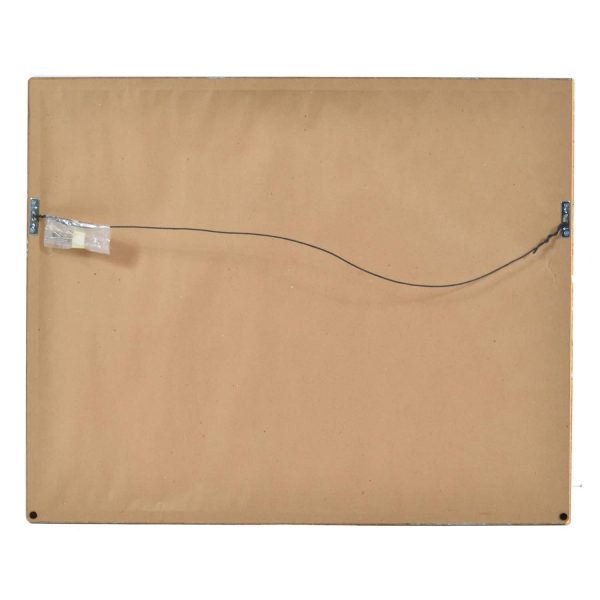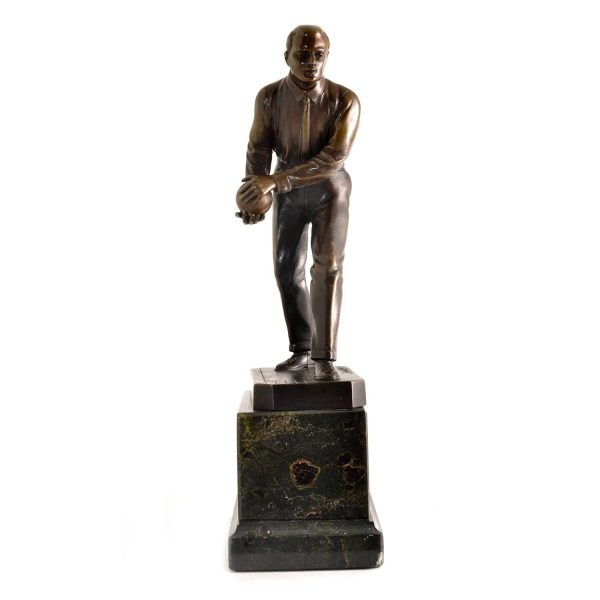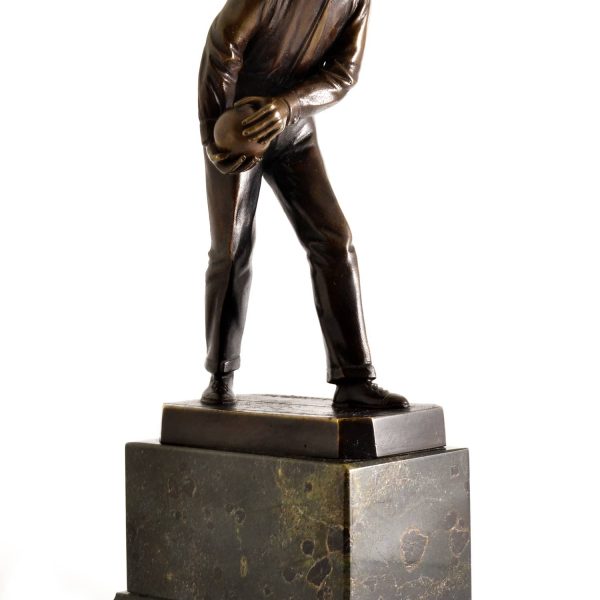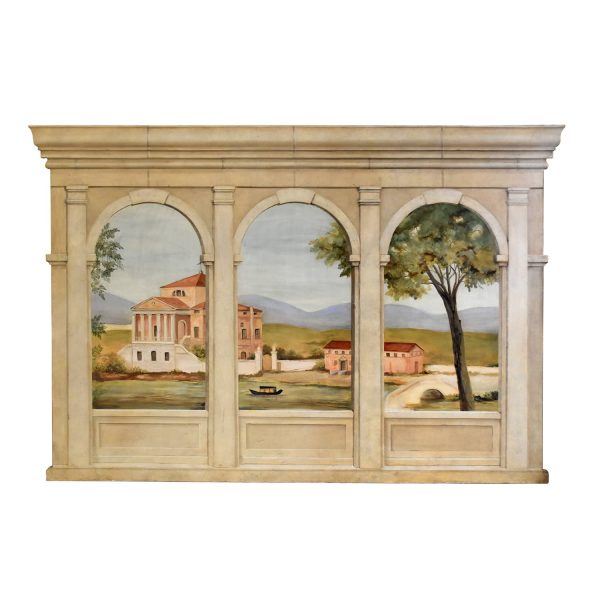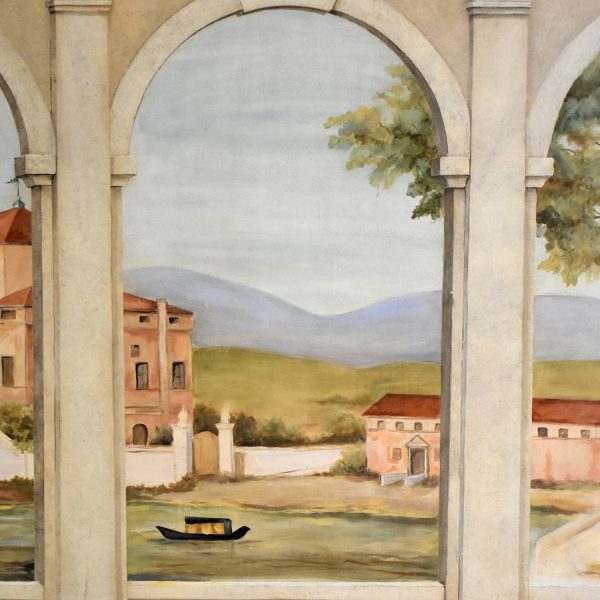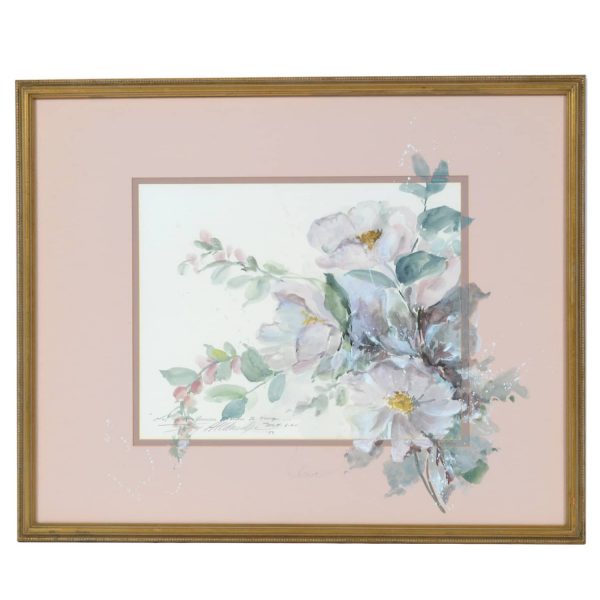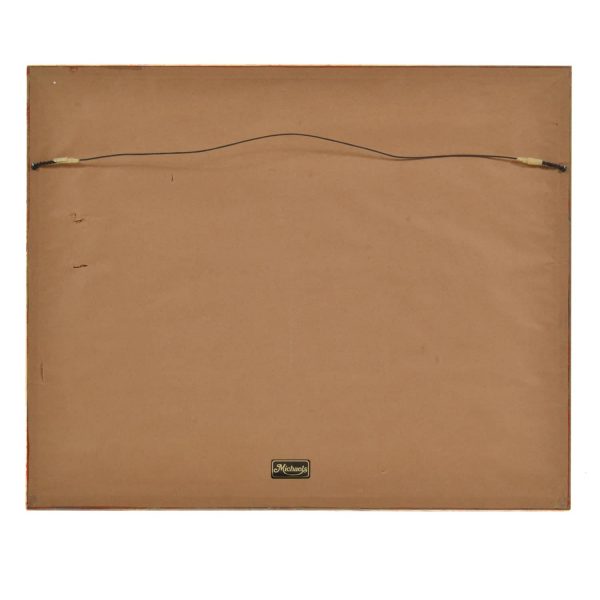A 19th Century oil painting on canvas depicting a saint. Saint Wolfgang wears robes and has a halo. He is holding a model of a church in one hand and an axe in the other. There is a church in the distant mountainous background. The halo on this figure’s head indicates he was canonized, symbolizes saintly status. The figure’s hat is that of a Bishop or Cardinal. The axe refers to an incident in the life of the saint. After having selected a solitary spot in the wilderness, he prayed and then threw the axe into the ticket; the spot on which the axe fell he regarded as the place where GOD intended he should build his church. The axe is still shown in the little market town of St. Wolfgang which sprang up on the spot of the old church.
Very good condition.
Canvas is 16″w x 21″ X H1″ Frame 24″L x 2″ D x 30″ H
“St. Wolfgang” of Regensburg. Oil on Canvas. German school. 19th Century
$2,200.00
A 19th Century oil painting on canvas depicting a saint. Saint Wolfgang wears robes and has a halo. He is holding a model of a church in one hand and an axe in the other. There is a church in the distant mountainous background. The halo on this figure’s head indicates he was canonized, symbolizes saintly status. The figure’s hat is that of a Bishop or Cardinal. The axe refers to an incident in the life of the saint. After having selected a solitary spot in the wilderness, he prayed and then threw the axe into the ticket; the spot on which the axe fell he regarded as the place where GOD intended he should build his church. The axe is still shown in the little market town of St. Wolfgang which sprang up on the spot of the old church.
Very good condition.
Canvas is 16″w x 21″ X H1″ Frame 24″L x 2″ D x 30″ H


MAECENAS IACULIS
Vestibulum curae torquent diam diam commodo parturient penatibus nunc dui adipiscing convallis bulum parturient suspendisse parturient a.Parturient in parturient scelerisque nibh lectus quam a natoque adipiscing a vestibulum hendrerit et pharetra fames nunc natoque dui.
ADIPISCING CONVALLIS BULUM
- Vestibulum penatibus nunc dui adipiscing convallis bulum parturient suspendisse.
- Abitur parturient praesent lectus quam a natoque adipiscing a vestibulum hendre.
- Diam parturient dictumst parturient scelerisque nibh lectus.
Scelerisque adipiscing bibendum sem vestibulum et in a a a purus lectus faucibus lobortis tincidunt purus lectus nisl class eros.Condimentum a et ullamcorper dictumst mus et tristique elementum nam inceptos hac parturient scelerisque vestibulum amet elit ut volutpat.
Related products
19TH C. French Lithograph. C. 1861. View Of The Seine And Pont De Solferina With Boats. Signed H. CHARPENTIER.
Bronze Bust William Shakespeare Grand Tour By Adolf Karl Brutt 1910 Germany H.Gladenbeck & Son
Bronze statuary ” L’ Hallali” hunting scene, signed E Delabrierre. C.A. 1875
Friedrich Gornik (Austrian, 1877-1943) Bronze Sculpture. Seated Camel. 1923
A lovely bronze sculptural object. We have available a Bronze figure of a seated Camel, in a naturalistic style, signed and dated F. Gornik 1923. Gornik (1877-1943) Austrian. Visible on the side of the bronze is the Berndorf foundry stamp (Austria). It measures 5 ¾” L x 3 ¼” W x 3 ½” H. and is in excellent condition, casting is superb!
Friedrich Gornik attended a technical school in Villach before he studied and worked for a year with Theodor Charlemont in Vienna. Afterwards (1897-1905) he studied at the Vienna School of Arts and Crafts, which he completed with a travel scholarship. At an exhibition in Villach in 1903, he presented his works, including ceramic animal representations, partly for lighting fixtures, as well as designs for vases and bowls. Subsequently, Gornik created large animal figures in plaster, which were cast by other artists and were inspired by his own zoological studies in the Schönbrunn Zoo. A naturalistic horse group, the Troika, was bought by Emperor Franz Joseph I and is now in the imperial villa in Bad Ischl.
GMO Guillermo Acevedo Mixed Media Painting 1960’s
Schmidt Hofer (1873-1925) Berlin, Germany. Bronze figure of a Bowler. Art Deco Period.
An antique Art Deco bronze sculpture by Schmidt Hofer. This is a superbly cast bronze figure of a standing male in the position of a bowler about to roll a bowling ball, on a black-toned marble pedestal. The details of the figure's shirt and hands are skillfully rendered. The figure is signed Schmidt Hofer on the top of the base and there is an illegitimate Foundry mark, probably the mark of 'Deutsche Bronze' on the side of the base.
This Bronze is in excellent condition, with a few minor chips to the base and one small chip on the top of the marble pedestal, very appropriate for its age.
Bronze : 2" w x 3 01/4" l x 7 1/2" h.
With pedestal : 2 3/4" w x 4 1/2" l x 10 1/2" h
Otto Schmidt-Hofer born in Berlin 1873 was a German sculptor who worked during the late 19th century and early 20th century. His work was primarily Neoclassical and Art Nouveau between 1893-1914 and Art Deco from 1915 until his death in 1925 Berlin , Germany.
Vintage Large Painting oil on canvas of a Tuscan Landscape.
The most unusual size of the painting 10’H x 10’Wx 3” D may suggest that it was used as a prop for theater stage, decorators prop, photography, modeling or special events. Depicting a view from inside the house with Architectural Elements of the wide molding and floor-to-ceiling columns by using warm, earthy tones to create the warm inside the house appearance. The grandeur of the architecture is painted three Arched Windows within the architectural framework by using a combination of straight and curved lines to depict the details of the windows and their surroundings. True the window you can see painted Tuscan landscape of a large estate situated on the lake with a small sailing boat all in the background of the distant mountains. To create a sense of movement small details were added such as trees, bushes, and other elements of the rural scene. The scale and perspective were painted to ensure it fits naturally within the scene.
The painting is in excellent condition, no tears, stain or any other damage.
Watercolor on Paper Painting. Bouquet of White Camellias. Floral. American. Signed Joy Aldridge.
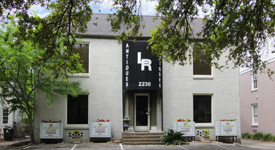
BISSONNET ANTIQUE STORE
2230 Bissonnet, Houston, TX 77005, USA
Phone: +1 (713) 857-3427
Email: lrantiques@lrantiques.com

HOUSTON ANTIQUE PAVILION
2311 Westheimer, Houston, TX 77098,
Phone: +1 (713) 857-3427
Email: lrantiques@lrantiques.com
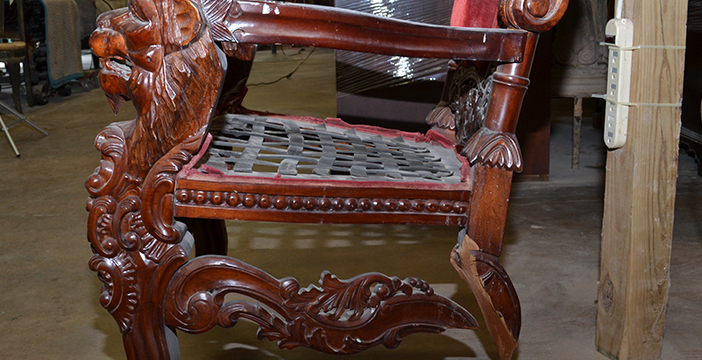
REFINISHING
3580 Lang Rd., Houston, TX 77092, USA
Phone: +1 (713) 935-0121
Email: lrantiques@lrantiques.com


